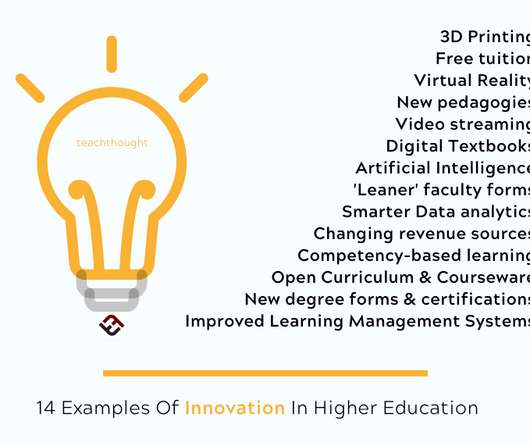How does an intelligent learning platform help teachers create a truly personalized learning environment?
Neo LMS
AUGUST 23, 2022
Modern edtech such as an intelligent learning platform (ILP) can help you achieve this by creating a personalized learning environment. . Personalized learning is currently emerging as one of the biggest trends in education. What is personalized learning? Competency-based learning.















Let's personalize your content